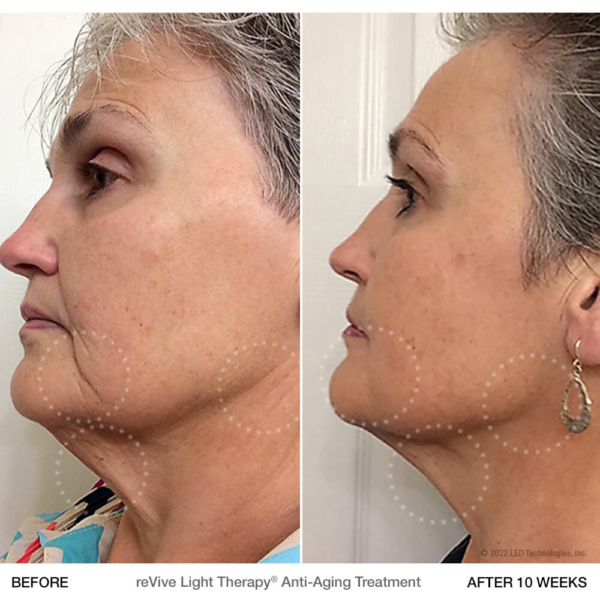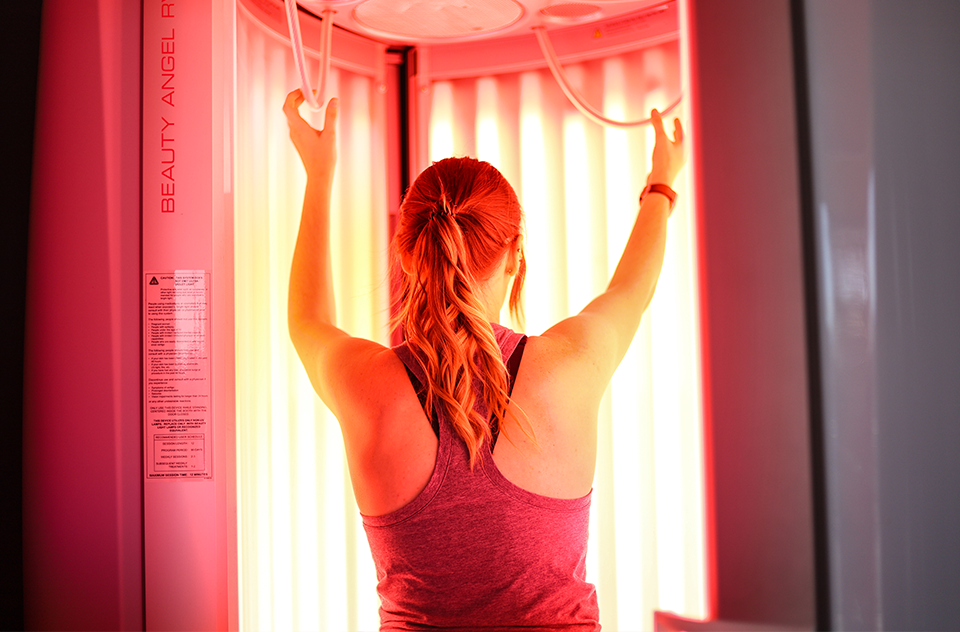In-Depth Insights into PBM Therapy for Pain Management
Wiki Article
Opening the Potential of Photobiomodulation: A Promising Method for Healing Intervention
Are you interested about the capacity of photobiomodulation for healing treatment? Envision a scenario where a person struggling with chronic discomfort finds alleviation with a non-invasive treatment that makes use of light. This is exactly what photobiomodulation offers. It is a promising technique that uses the power of light to stimulate healing and decrease inflammation in various medical conditions. By targeting particular mobile procedures, photobiomodulation has actually revealed possible in increasing wound healing, minimizing discomfort, and advertising cells regrowth. In this introduction, we will check out the systems of action, applications in medicine, and the present evidence supporting the efficacy of photobiomodulation. Additionally, we will discuss future directions and potential challenges in unlocking its full potential as a therapeutic intervention.Comprehending Photobiomodulation
To understand photobiomodulation, you require to grasp the idea of exactly how light treatment can straight affect mobile processes in your body. Photobiomodulation, also called low-level light treatment, is a non-invasive therapy that utilizes details wavelengths of light to boost biochemical responses in your cells. When subjected to these light wavelengths, your cells take in the energy and convert it into mobile power, referred to as adenosine triphosphate (ATP) This rise in ATP manufacturing leads to a waterfall of cellular feedbacks, including improved metabolic rate, enhanced circulation, and raised production of collagen and various other proteins.The restorative results of photobiomodulation are significant and have actually been studied thoroughly in numerous medical areas. It has actually shown appealing outcomes in promoting tissue repair and regrowth, lowering inflammation, soothing discomfort, and boosting injury recovery. Photobiomodulation has actually been located to have a favorable influence on neurological conditions, such as stressful mind injury and stroke, by promoting neural activity and advertising neuroplasticity.
Among the essential benefits of photobiomodulation is its security account. Unlike other treatments, photobiomodulation does not create any type of warm or trigger cells damages. It is a non-invasive and pain-free treatment that can be executed in a clinical setting and even in the comfort of your very own home with making use of mobile tools. However, it is essential to keep in mind that photobiomodulation must be carried out by qualified specialists or according to the supplier's guidelines to ensure optimum results and safety and security.

Devices of Activity
In recognizing the mechanisms of activity, you will find just how photobiomodulation straight affects mobile processes via specific biochemical responses. When light is used to the body, it is taken in by chromophores, such as cytochrome c oxidase and flavins, which are existing in the mitochondria. This absorption results in a waterfall of occasions that ultimately result in cellular adjustments.Photobiomodulation enhances the task of cytochrome c oxidase, a crucial enzyme in the mitochondria that is entailed in the electron transport chain. As an outcome, mobile metabolic rate is improved, advertising tissue repair work and regeneration.
Furthermore, photobiomodulation has actually been revealed to regulate cellular signaling pathways. It triggers numerous growth aspects and signifying molecules, such as nitric oxide and reactive oxygen types, which play crucial duties in procedures like cell, swelling, and angiogenesis spreading. These signaling paths add to the restorative results of photobiomodulation, advertising cells healing and lowering pain and swelling.
Applications in Medicine
Explore the wide-ranging applications of photobiomodulation in medication. Photobiomodulation, also called low-level light therapy, is a non-invasive treatment that uses light to stimulate cellular processes and promote healing. In medication, this technique has shown promising outcomes throughout various fields.Among the primary applications of photobiomodulation is in pain monitoring. pbm therapy. It has actually been used to minimize both chronic and severe pain, consisting of bone and joint conditions, neuropathic discomfort, and post-operative pain. By targeting the damaged location with details wavelengths of light, photobiomodulation can lower swelling, advertise tissue repair work, and offer relief
In addition, photobiomodulation has actually shown prospective in injury healing. It can speed up the recovery procedure by improving cell spreading, promoting angiogenesis, and minimizing mark tissue formation. This has substantial ramifications in the treatment of persistent injuries, such as diabetic ulcers and pressure sores.
In dermatology, photobiomodulation has actually been utilized for its anti-inflammatory and regenerative effects. It can boost the appearance of marks, minimize acne lesions, and boost hair development in conditions like androgenetic alopecia.
Furthermore, photobiomodulation has actually revealed assurance in neurorehabilitation. It can improve cognitive function, boost motor recovery, and help in the therapy of neurodegenerative diseases like Alzheimer's and Parkinson's.
Medical Proof and Research Study Searchings For

In the field of bone and joint disorders, photobiomodulation has actually been located to decrease discomfort and swelling, enhance series of motion, and increase cells fixing. Researches have demonstrated its efficacy in dealing with conditions such as osteoarthritis, tendinopathies, and muscle pressures. Additionally, photobiomodulation has actually shown favorable effects on injury healing by promoting collagen synthesis, angiogenesis, and fibroblast expansion. This makes it a beneficial device in the management of persistent injuries, diabetic person abscess, and medical lacerations.
Moreover, study has shown that photobiomodulation can have neuroprotective and neuroregenerative impacts. It has been discovered to enhance cognitive feature, minimize neuroinflammation, and improve neuronal survival and synaptic plasticity. This has vital effects for the treatment of neurological problems such as Alzheimer's illness, Parkinson's illness, and stroke.
Future Directions and Potential Obstacles
Relocating forward, it is essential to take into consideration the future directions and potential difficulties bordering using photobiomodulation as a restorative treatment. One vital future direction is the expedition and optimization of application parameters. Presently, there is no consensus on the ideal wavelength, intensity, duration, and regularity of photobiomodulation therapy. Additional photobiomodulation research study is required to understand the dose-response connection and develop evidence-based guidelines for medical practice.Another crucial future direction is the advancement of mobile and cost-effective photobiomodulation devices. While existing tools are effective, they are commonly bulky, expensive, and need expert guidance - photobiomodulation laser. The development of straightforward and cost effective devices would considerably boost accessibility to this therapy, enabling even more people to gain from its potential therapeutic results
Additionally, future research must concentrate on elucidating the devices underlying photobiomodulation. In spite of its growing popularity, the precise systems through which photobiomodulation applies its healing effects are not fully understood. Recognizing these devices would certainly not just boost our knowledge of the treatment but also aid in the advancement of more targeted and reliable treatments.
However, there are likewise potential challenges that need to be resolved. photobiomodulation therapy. These consist of the need for standardized methods, the requirement for well-designed medical trials with bigger example sizes, and the demand for long-term follow-up researches. Governing and safety factors to consider must be taken right into account to guarantee the safe and efficient usage of photobiomodulation in clinical practice.
Verdict
To conclude, photobiomodulation holds terrific guarantee as a restorative intervention in medication. Its mechanisms of activity and clinical evidence suggest its prospective for dealing with numerous problems. However, more research is needed to totally comprehend its advantages and deal with any type of prospective challenges. With continuous researches and advancements in this area, photobiomodulation has the potential to unlock brand-new opportunities for improving individual end results.Are you interested about the possibility of photobiomodulation for therapeutic intervention? By targeting specific cellular processes, photobiomodulation has actually shown potential in accelerating wound recovery, minimizing pain, and advertising tissue regrowth.In addition, photobiomodulation has revealed prospective in wound healing.Relocating onward, it is crucial to take into consideration the future instructions and possible obstacles surrounding the usage of photobiomodulation as a therapeutic treatment. With continuous researches and advancements in this field, photobiomodulation has the potential to unlock brand-new possibilities for enhancing individual results.
Report this wiki page